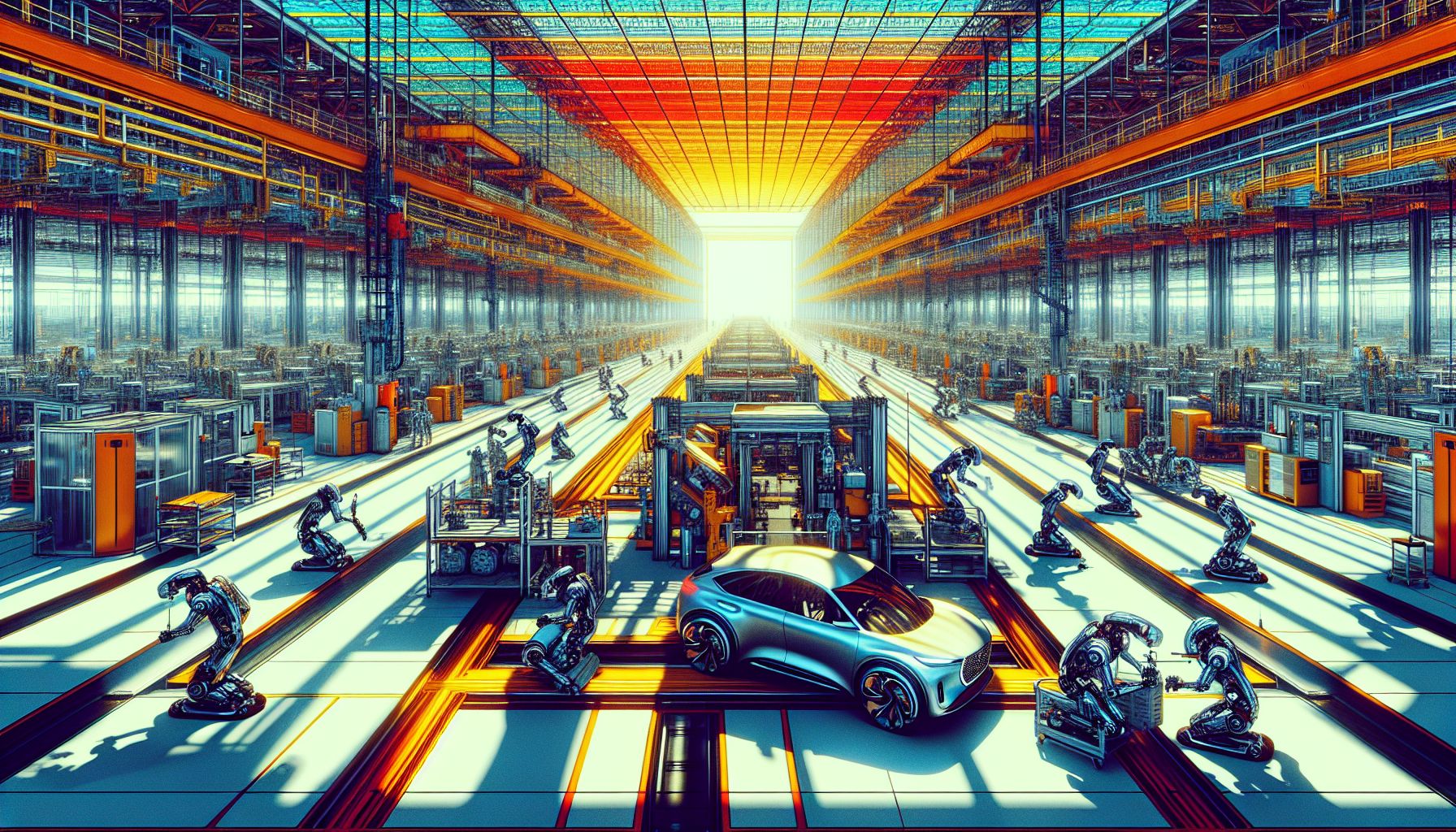Chinese Automakers Lead Humanoid Robot Revolution in Manufacturing

China, Monday, 26 August 2024.
Chinese car manufacturers are outpacing global competitors in deploying humanoid robots for automotive production. This technological leap, showcased at the World Robot Conference, promises to transform the industry, with companies like Zeekr already implementing advanced robots in their factories.
Technological Advancements in Robotics
The World Robot Conference held in Beijing showcased a significant leap forward in humanoid robotics, with over 27 Chinese-designed humanoid robots unveiled. Companies like Agibot, Astribot, Galbot, and Deep Robotics presented their latest innovations, highlighting the country’s ambitions to dominate this emerging market[1]. Tesla’s Optimus robot was the only foreign competitor at the event, underlining the intense competition and rapid advancements in the field.
Benefits of Humanoid Robots
The deployment of humanoid robots in car manufacturing offers several benefits. These robots are designed to perform repetitive and hazardous tasks, reducing the risk of injuries to human workers. They also enhance production efficiency and accuracy, particularly in tasks like painting, material handling, and quality inspection. For instance, UBTECH’s Walker S Lite robot, currently used in Zeekr’s Hangzhou Bay factory, has demonstrated the ability to perform logistics tasks continuously for 21 days, showcasing its reliability and efficiency[2].
How the Technology Works
Humanoid robots are equipped with advanced sensors and autonomous learning capabilities, allowing them to navigate complex industrial environments and perform a variety of tasks. For example, Deep Robotics’ Dr.01 robot is designed for hazardous industrial settings and features sensors that enable autonomous decision-making. These robots are powered by large language models (LLMs), which provide them with enhanced understanding, perception, and decision-making abilities[3]. BEAIRIC is working on creating the world’s largest general-purpose database for robotics AI training to further improve these capabilities[4].
Key Players and Locations
Several key players are driving the innovation in humanoid robotics. UBTECH Robotics, based in Shenzhen, has been at the forefront with its Walker S series, used in factories like those of Zeekr and Nio. Agibot, founded by Li Zhihui, is another notable company, focusing on industrial applications powered by LLMs. These companies are leveraging significant investments from the Chinese government, which has allocated approximately €1.4 billion for robotics, with an equal amount earmarked specifically for humanoid robots[5].
Future Prospects
The future of humanoid robots in the automotive industry looks promising. The Chinese government aims to establish an innovation system for humanoid robots by 2025, with a secure and reliable supply chain in place by 2027. Humanoid robots are expected to play crucial roles in intelligent manufacturing, personal services, healthcare, and education. With the market size of humanoid robots in China projected to reach approximately 75 billion yuan by 2029, representing 32.7% of the global total, the impact of these technologies will be profound[6].

